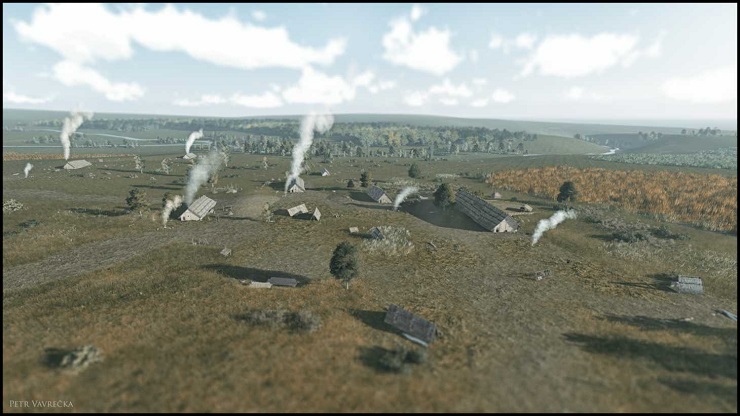What kind of environment did the Neolithic people move about in is a question that is not easy to answer. And how did the country develop without any human intervention is almost impossible to estimate seriously. It seems, in any case, that the impact of the Neolithic people on the landscape was not as crucial a factor as it is sometimes presented. Previously people were already influencing their surroundings in some way, but extensive small-scale interventions in areas with a low population density could not have significantly altered the landscape. The issue as to whether during the changes in the system of settlement and farming and based on the emergence and the steady expansion of the populated areas the human impact on the environment has increased or not and whether, already in the Neolithic, it somehow radically changed the natural environment, has already been addressed by several generations of scholars as also has the question as to whether or not the Neolithic people were surrounded by dense forest or by open countryside.
 |
| Genre imaging of the landscape of early farmers created on the basis of archaeological research in Bylany. The true nature of the settlement and the natural environment in which it is located, still remain somewhat of an enigma, however. Author Peter Vavrečka. |
If the manner of agricultural land use during that period did not represent a more significant factor in regard to the transformation of landscape around the settlement as a whole, an aspect that could have significantly transformed the landscape was the cattle that were grazing in it. Grazing causes the thinning of forests and first the dense forest areas change into sparse grooves and later on, because of the prolonged impact of the grazing, distinct areas of pasture-land are created. There is a question however, as whether or not there really were any significant transformations during the Neolithic, or whether it was the animals that gradually helped the maintenance of the forest by wild herbivores that had moved away from the populated areas. Based on the low density of the Neolithic settlements and on their small size, numbering only a few houses, herds could not be large enough to significantly damage the forest, while feeding on young shoots could not have any significant impact either. A certain influence could be expected, however, in connection with the construction of massive wooden structures - houses, corrals and later-on roundels. It is considered that the construction of one house could affect the composition of the population in 2-4 ha of the surrounding forest; the forest has a great ability to regenerate, however, and no significant reduction of the forests in our country was to occur until much later on, and then it was as a result of the specialist and sophisticated manufacturing processes and the high level of their demand for raw materials.
So what did surround the villages of the early farmers? An open landscape comprising fertile lowlands together with islands of forest and permeable terrain along the rivers, framed at higher elevations by more or less dense forests stands on brown soils. But this represents a model picture, one that differs from place to place, from one landscape to another, depending on the local conditions, the soil, the climate, etc. A key source for information about the composition of vegetation is pollen analysis, while in regard to the environs of specific settlements it would then be carbon analysis.
Want to learn more?
- Davison, K., P. M. Dolukhanov, G. R. Sarson, and A. Shukurov. 2006. The role of waterways in the spread of the Neolithic. Journal of Archaeological Science 33 (5):641-652.
- Dreslerová, D. 2012. Les v pravěké krajině II. Archeologické rozhledy 64 (2): 199–236.
- Pokorný, P. 2011. Neklidné časy. Kapitoly ze společných dějin přírody a lidí. Praha: Dokořán
- Sádlo, J., P. Pokorný, P. Hájek, D. Dreslerová, and V. Cílek. 2005. Krajina a revoluce. Významné přelomy ve vývoji kulturní krajiny českých zemí. Praha: Malá Skála.
 Archeologické 3D virtuální muzeum
Archeologické 3D virtuální muzeum

.png)